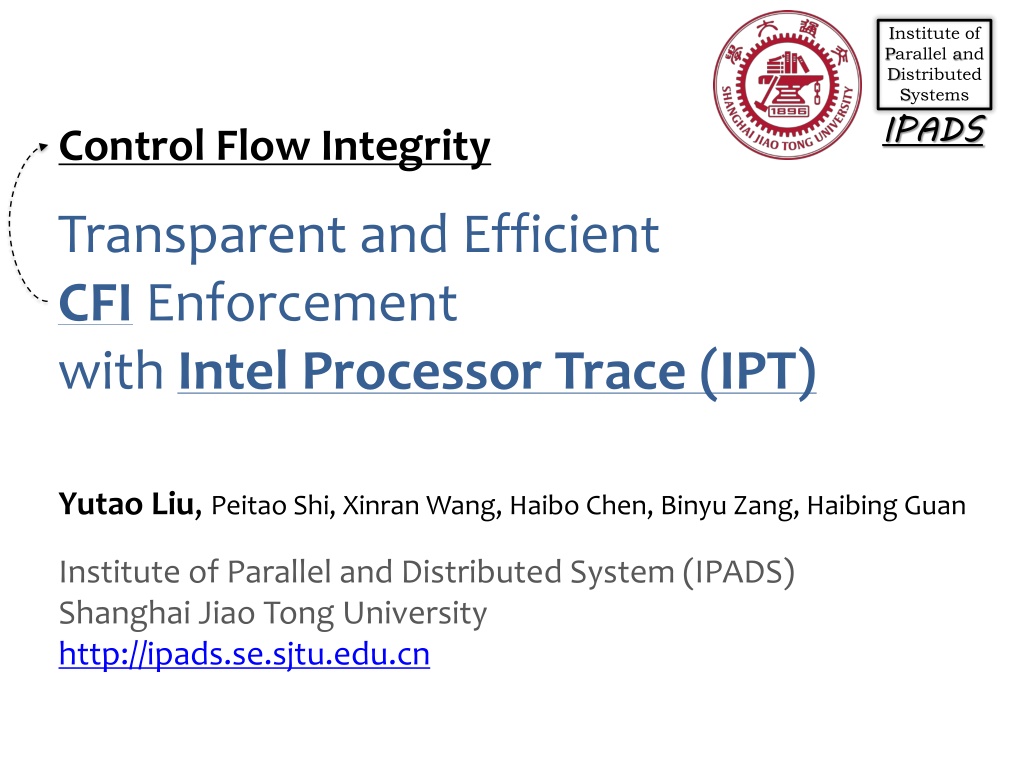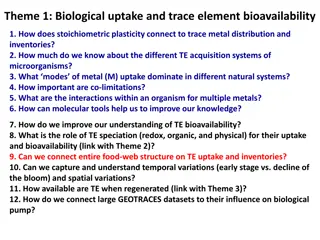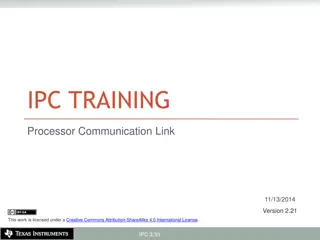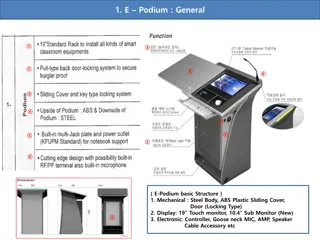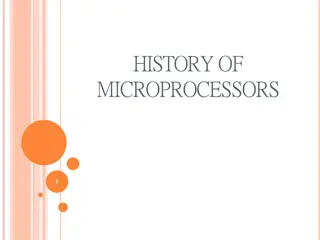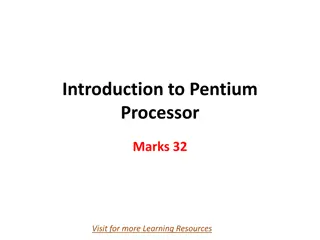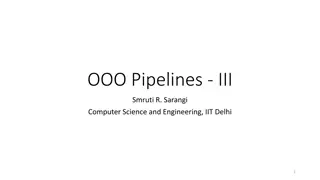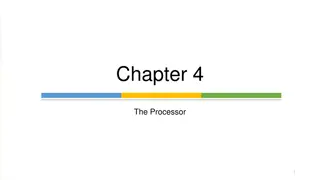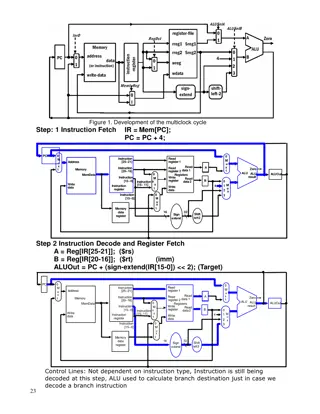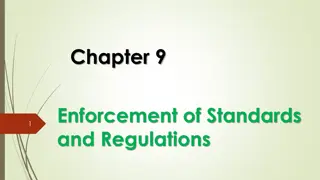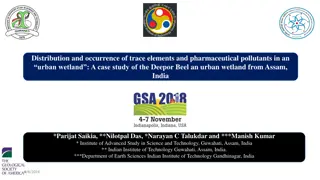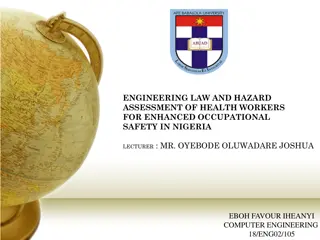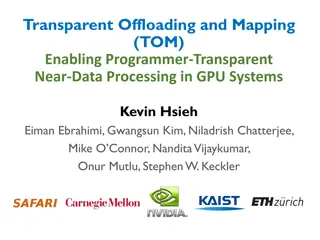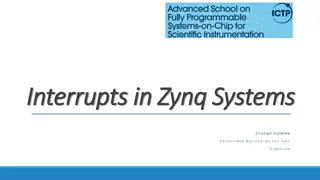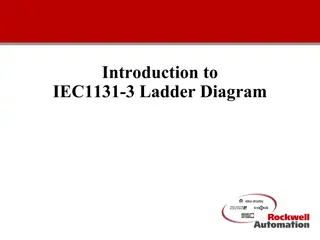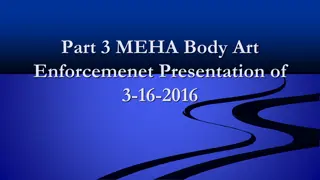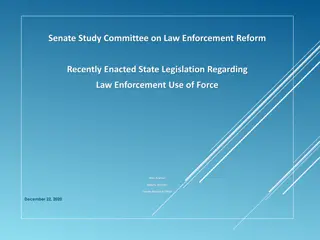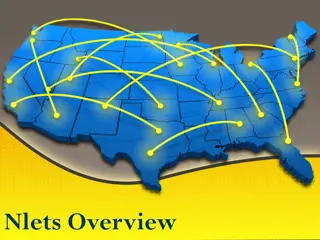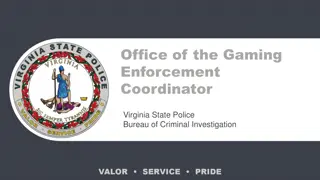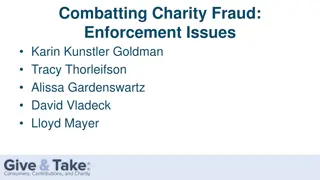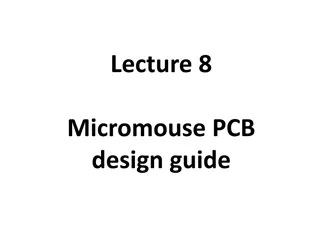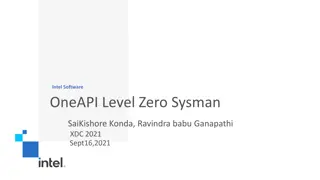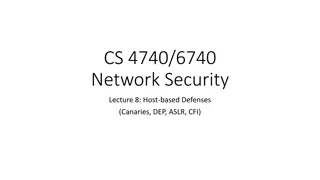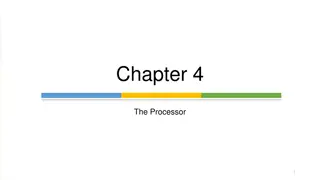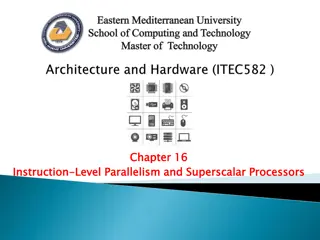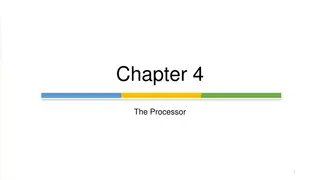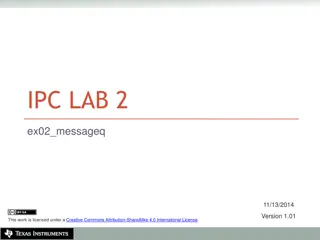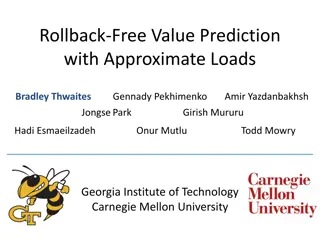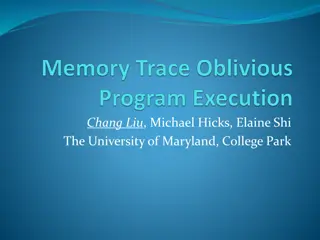Transparent and Efficient CFI Enforcement with Intel Processor Trace
This research discusses Control Flow Integrity (CFI) enforcement to combat control flow hijacking attacks. It explores methods for runtime CFI enforcement, including instrumented checking and transparent monitoring. The study delves into trace mechanisms, buffer management strategies, and when to trigger trace events in order to enhance program security.
Download Presentation

Please find below an Image/Link to download the presentation.
The content on the website is provided AS IS for your information and personal use only. It may not be sold, licensed, or shared on other websites without obtaining consent from the author. Download presentation by click this link. If you encounter any issues during the download, it is possible that the publisher has removed the file from their server.
E N D
Presentation Transcript
Institute of Parallel and Distributed Systems IPADS Control Flow Integrity Transparent and Efficient CFI Enforcement with Intel Processor Trace (IPT) Yutao Liu, Peitao Shi, Xinran Wang, Haibo Chen, Binyu Zang, Haibing Guan Institute of Parallel and Distributed System (IPADS) Shanghai Jiao Tong University http://ipads.se.sjtu.edu.cn
Control Flow Hijacking Attacks Shellcode execution Memory corruption bugs BAD THING Overwrite Code reuse Attackers Victim memory
Attacks & Defenses Control flow hijacking attacks Randomization Enforcement
Programs Control Flow Program consists of basic block (BB) Control flow from one BB to other BB Each BB has limited valid targets CFG can be pre-generated BB-1 BB-3 BB-2 Attack: issues an invalid control flow transfer BB-5 BB-4 BB-6 BB-7 BB-8 BB-9 BB-10 BB-11 Control Flow Graph (CFG) Control Flow Integrity (CFI): Enforce control flow as CFG during runtime
Runtime CFI Enforcement Method #1: instrumented checking Check all branches check(%ecx) jmp *%ecx check(%ebx) call *%ebx check(stack) ret Compiler based jmp *%ecx call *%ebx ret Break code integrity COTS unfriendly Binary rewriting Share library unfriendly Method #2: transparent monitoring RUNTIME Binary Compare Transparent to applications Analysis Binary
Transparent Monitoring How to TRACE? When to TRIGGER? What to CHECK?
How to Trace Trace by hardware (performance counter) Two choices before: BTS & LBR Branch trace store (BTS) Trace every branch in memory:source,destination, type Sufficient information, but extraordinarily slow Last branch record (LBR) Only trace most recent (16 or 32) branches in register Very fast, but with insufficient information History flush attacks
When to trigger When the trace buffer is full Buffer size matters Trade-off between performance and security When specific events happen Whenever attack may happen Cross-boundary points Security sensitive system call
What to check Heuristic checking Ensure that control flow obeys some simple rules: Call to a function entry Return to instruction right after call Etc. Strict CFG enforcement Pre-generate CFG,and enforce it at runtime Fine- or coarse-grained CFG Shadow stack? Fine-grained CFG enforcement
In a Summary Efficient trace with sufficient runtime information BTS and LBR cannot survive Appropriate triggering point Prevent attacks without sacrificing too much performance Fine-grained CFG enforcement Heuristic check is not enough
IPT to the Rescue Intel Processor Trace (IPT) Introduced in Intel Broadwell Fast tracing Can trace sufficient information in memory BUT WHY>>>
Background: Demystify IPT Fast Trace IPT uses aggressive compression Unconditional direct branches are not logged at all Conditional branches are compressed to a single bit Each indirect branch is traced as one target address Result in average <1 bit per retired instruction
Background: IPT Trace Example TIP packet: target address of indirect branch TNT packet: indication of taken or non-taken conditional branch
Challenges: Fast Trace vs. Slow Decode The performance overhead is shifted from tracing to decoding Decoding is several orders of magnitude slower than tracing. Precise Tracing Decoding Filtering BTS Full Slow (50X) Fast None LBR Low Very Fast (< 1%) Fast CPL, CoFI IPT Full Fast (3%) Slow (200X) CPL, CR3, IP
Contribution FlowGuard: practical CFI with IPT Transparent monitor without instrumentation Efficient trace and check by separating fast and slow paths Precise CFI enforcement with fine-grained CFG and runtime information Evaluation results Apply FlowGuard to server applications Prevent a various of code reuse attacks Less than 4% performance overhead for normal use cases
Outline Efficient trace and check Precise CFI enforcement Implementation and evaluation
Why Slow Decode is Required? Main problem: inconsistency between static generated CFG and IPT traced data Indirect edge BB-1 Direct edge Conditional branch information BB-3 BB-3 BB-2 BB-2 T T N BB-5 BB-5 BB-4 BB-6 N BB-7 BB-9 BB-10 BB-7 BB-8 BB-9 BB-10 Traditional static generated CFG IPT traced data
Solution: IPT Compatible CFG Construction Indirect targets connected CFG (ITC-CFG) Nodes left: BB with incoming indirect edges (IT-BB) Edges reconnection: two IT-BBs are connected if and only if: There is only one indirect edge in the path from BB-x to BB-y This indirect edge is targeted at BB-y BB-1 BB-3 BB-2 BB-5 BB-3 BB-2 Static T analysis N BB-5 BB-4 BB-6 BB-7 BB-9 BB-10 BB-7 BB-8 BB-9 BB-10
Fast Path Check in Runtime IPT traced data can be directly matched on the ITC-CFG TIP BB-3 TIP BB-2 BB-3 BB-2 BB-5 ? TIP BB-7 TIP BB-9 BB-7 BB-9 BB-10 IPT traced data ITC-CFG
Outline Efficient trace and check Precise CFI enforcement Implementation and evaluation
Fast Path (ITC-CFG) Problem Coarse-grained CFI Over-approximated CFG generation Result in large false negative Not benefit from the whole dynamic information Precision loss Average indirect targets allowed (AIA) This can be solved by slow decode! Main reason: lack of TNT information
Solution: Separate Fast and Slow Path IPT Edges matched? Y No traced data ITC-CFG attack N Fast path Attack detected Credible edges matched? Y IPT Credit labeled ITC-CFG Y Edges matched? No traced data attack N N Slow path How? Attack detected Slow path Pre-generated Binary
Dynamic Fuzzing Training Dynamic training to label ITC-CFG edges with credits The credit of each edge depends on its occurrence during the training phase Each edge is also associated with the TNT information BB-3 BB-3 BB-2 BB-5 BB-2 BB-5 T BB-7 BB-9 BB-10 BB-7 BB-9 BB-10 ITC-CFG Credit Labeled ITC-CFG
Dynamic Fuzzing Training (cont) Dynamic training to label ITC-CFG edges with credits The credit of each edge depends on its occurrence during the training phase Each edge is also associated with the TNT information We use a fuzzing based approach AFL: a coverage-oriented fuzzer Note: the security of FlowGuard does not rely on the coverage
System Call Interception We have a default setting with 7 security-sensitive system calls read, write, execve, mmap, mprotect, sigaction, sigreturn Provide users with interface to specify their own endpoints
Outline Efficient trace and check Precise CFI enforcement Implementation and evaluation
FlowGuard Architecture Static Binary Analysis 1 Process Executable Credit Labeled ITC-CFG Libraries Dynamic Fuzzing Training 2 4 User Kernel 5 Cores 3 Kernel Module Syscall Interceptor Flow Checker Fast Path Slow Path Memory
Experimental Setup Intel Skylake machine with IPT support 8 cores & 16GB RAM Debian 8.0, Linux kernel 4.3.0 Dyninst plugin for static binary analysis AFL for fuzzing the software and collecting training inputs desock to channel socket communication to the console
Security Analysis Attack detected ROP: during write() syscall SROP: during sigreturn() syscall Average Indirect-targets Allowed (AIA) summary
Performance Evaluation Macro Benchmarks
Institute of Parallel and Distributed Systems Summary IPADS FlowGuard: leverage IPT for practical CFI Transparent monitor without instrumentation Efficient trace and check by separating fast and slow paths Precise CFI enforcement with fine-grained CFG and runtime information A working prototype on Intel Skylake with promising result Successfully detect ROP like attacks and optimize AIA Small Performance impact
Institute of Parallel and Distributed Systems Thanks IPADS Questions Questions Institute of Parallel And Distributed Systems http://ipads.se.sjtu.edu.cn
